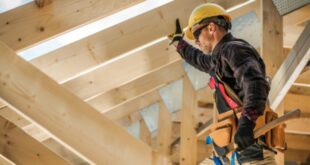No one can say Carlos Rodriguez had it easy when he was named executive director of the Baldy View chapter of the Building Industry Association of Southern California.
Rodriguez first went to work for the chapter in 2004, when the local housing market and the economy in general were both hitting on all cylinders.
In 2010, when Rodriguez was named head of the chapter that covers all of San Bernardino County, things weren’t so rosy. The local housing market was at its lowest ebb, with sales and median prices both scraping bottom.
At the same time, the national economy was mired in the worst of what would eventually be called the Great Recession.
Five years later, while the housing market isn’t back to where it was before the recession hit seven years ago this month, it is on its way back. When Rodriguez breaks down the local housing industry, he likes most of what he sees.
The bottom line is that the housing market in all of the Inland Empire is getting stronger, it’s just doing so at a slow pace, Rodriguez said.
“If the economy keeps improving we would expect to sell more houses next year than we’ll sell this year,” Rodriguez said. “We’re looking at historically low interest rates, at least for now, and a lot of consumers are still interested in buying a house.”
Rodriguez spoke with IE Business Daily this week about the state of the local housing market, why the decline in unemployment hasn’t led to more houses being bought and how important home construction is to the Inland economy.
Q: There’s an interesting dynamic at work in the housing market right now. Employment is up, which means people have more money to spend, but home sales have gone up incrementally in comparison. In some markets they haven’t gone up at all. How do you account for this?
A: I think there are several reasons. The main one is that the FHA [Federal Housing Administration] tightened up on their requirements to get a loan. Of course, that was the result of the housing crisis, which happened because it was too easy for some people to get a loan. But the result is that a lot of people can no longer qualify. Also, people are a lot more cautious with their money. Spending patterns have changed.
Q: How much more difficult is it now to get an FHA loan?
A: Back then, in some cases, you could get a loan if you could show that you could put three percent down. Now it’s closer to 10 percent, which is quite a difference. I bought my first home in 2003. If I’d had to put 10 percent down in 2003, things might have worked out differently.
Q: Legislatively, is there any way to change that?
A: I don’t think so. Gary Miller [former U.S. Rep.] proposed a bill with that goal in mind and it didn’t get out of committee. There’s just no political will for it in Washington, D.C.
Q: Some people in the housing industry say they’re being hurt by a shortage of first-time buyers, that younger people are living with their parents longer and are waiting to buy their first home. How much of a problem is that?
A: All of the data indicates that the younger people, the millennials, want to own a house at some point in their lives. But you need discretionary income to buy a house and then maintain it, and a lot of younger people don’t have that. Also, not many people go from living with their parents to buying a house. You usually rent first, and in today’s market renting is expensive, too.
Q: Last week CoreLogic came out with its latest report on negative equity in the housing market, and the numbers were encouraging: about 759,000 residential properties regained equity during the second quarter of this year. The number of “underwater” mortgages in Riverside and San Bernardino counties is also down. Is it accurate to say that distressed properties are no longer an issue in the housing market, or that they aren’t as significant as they once were?
A: I would say so. Over the last year and a half or so that problem has pretty much gone away, although not completely. It’s still an issue we have to deal with, but it’s no longer a significant factor.
Q: What about multifamily housing? With home prices so high, are we going to see more apartments and condominium projects developed in the Inland Empire?
A: I hope so. We’re the building industry, and we want to see as many housing options as possible get built. Multifamily is a very important part of the market.
Q: Why so?
A: Because you have to have a bridge between living with your parents and owning a house. Just about everybody rents at some point in their lives.
Q: What is your reaction when you see housing prices getting has high as they are? The median prices in Riverside and San Bernardino counties were $315,000 and $270,000 last month, respectively. Both of those were year-over-year increases. Aren’t a lot of people being priced out of the market?
A: My first reaction is that it’s a good incentive for people who want to sell, that it’s a sellers market. But I also admit that there’s a problem with affordability, and that we have to strike a better balance between price and affordability.
Q: You talk a lot about homebuilding being vital to the Inland Empire, that it’s the backbone of the region’s economy. Can you give an example of what you’re talking about?
A: Yes. Right now, in San Bernardino County, we’re down about 60,000 homes. We need to build about 60,000 homes to keep pace with where we should be. If we could build just two-thirds of that, it would create about $1 billion in economic impact in the county over five years. I think that shows how much is missing from the economy when houses aren’t being built.
 IE Business Daily Business news for the Inland Empire.
IE Business Daily Business news for the Inland Empire.


